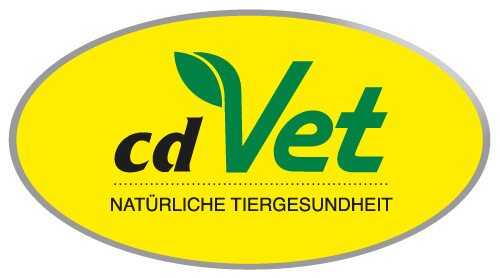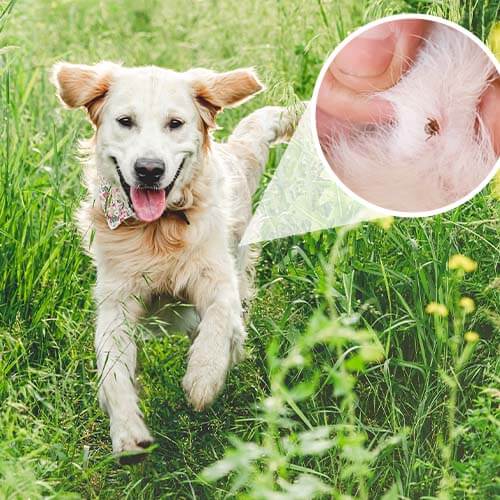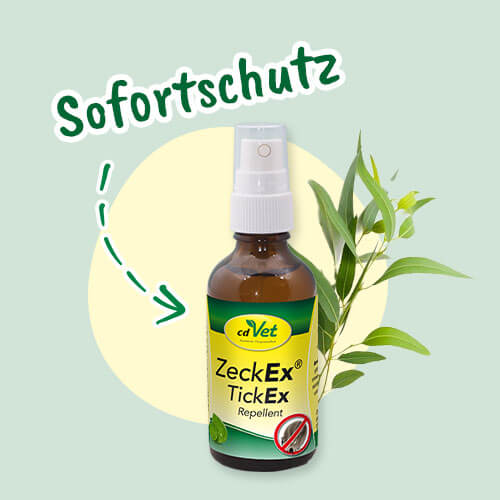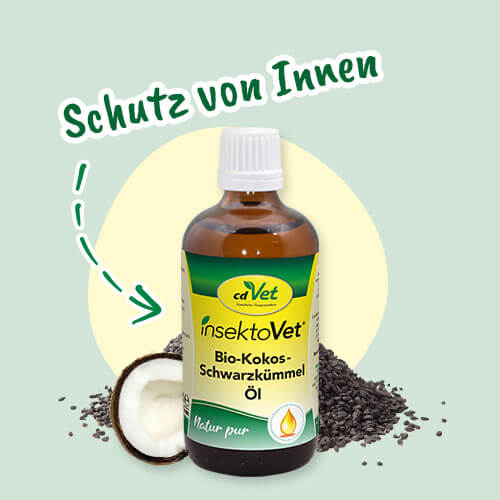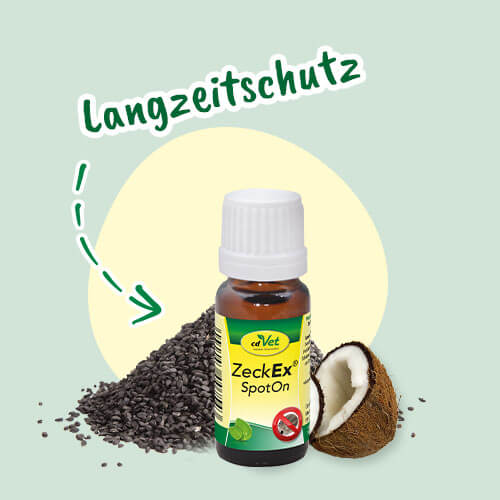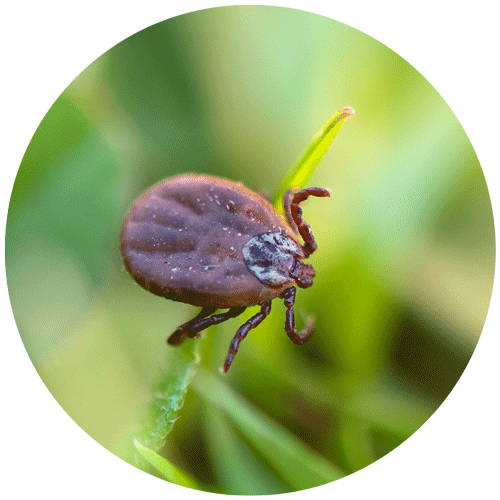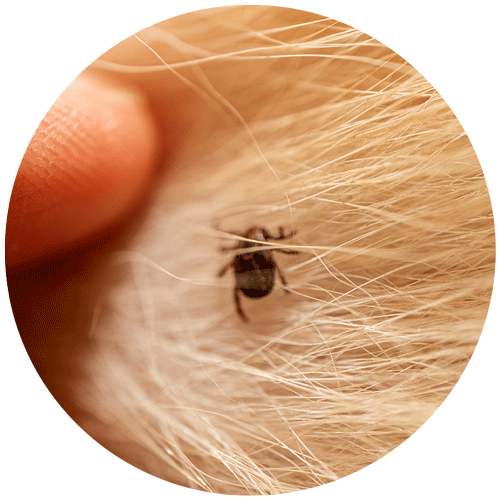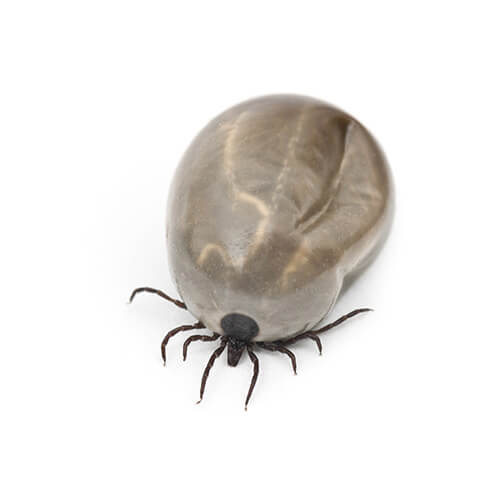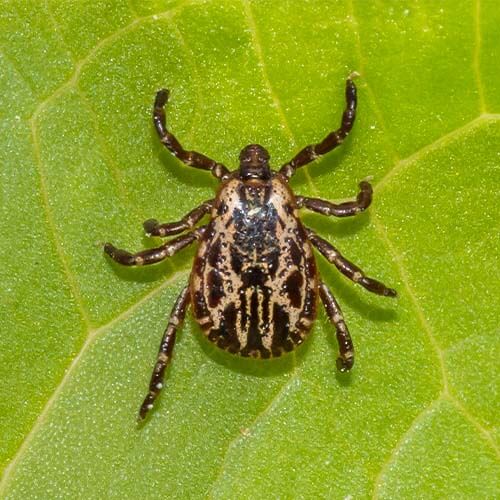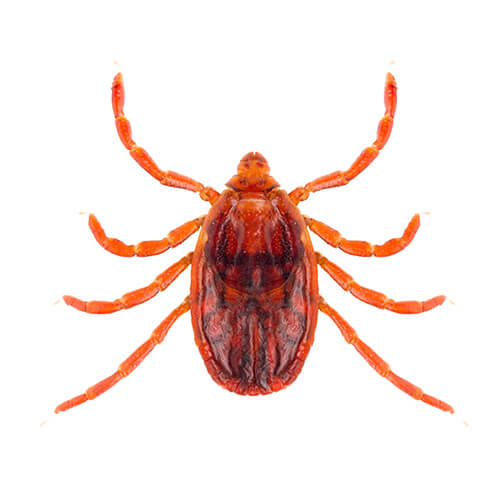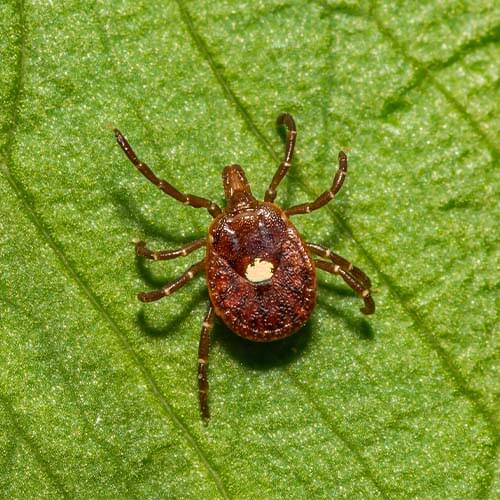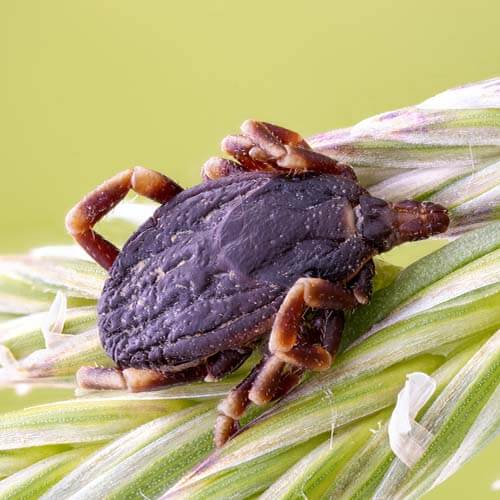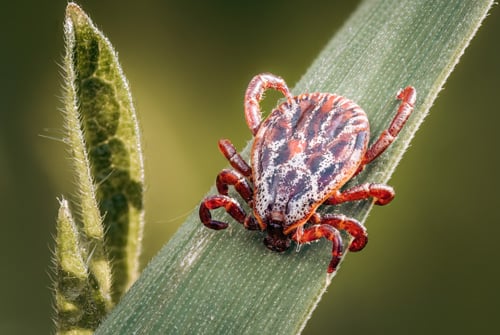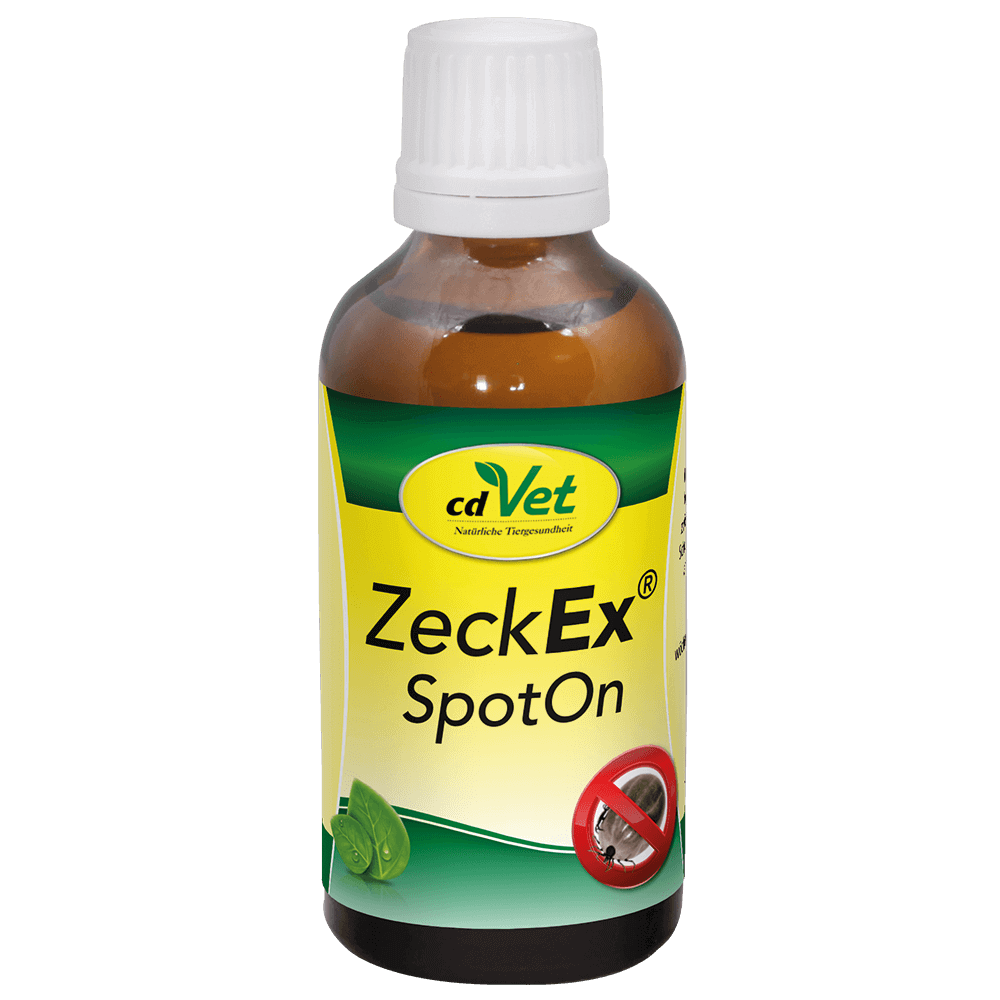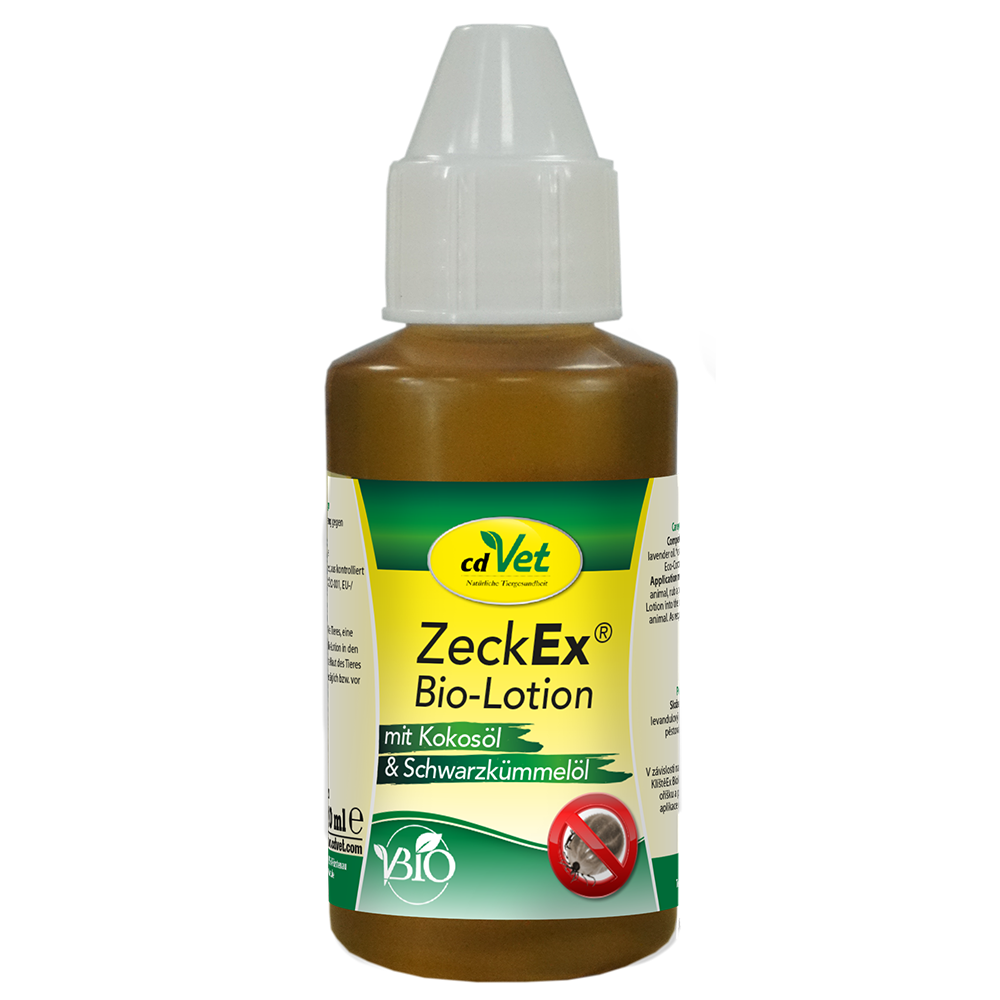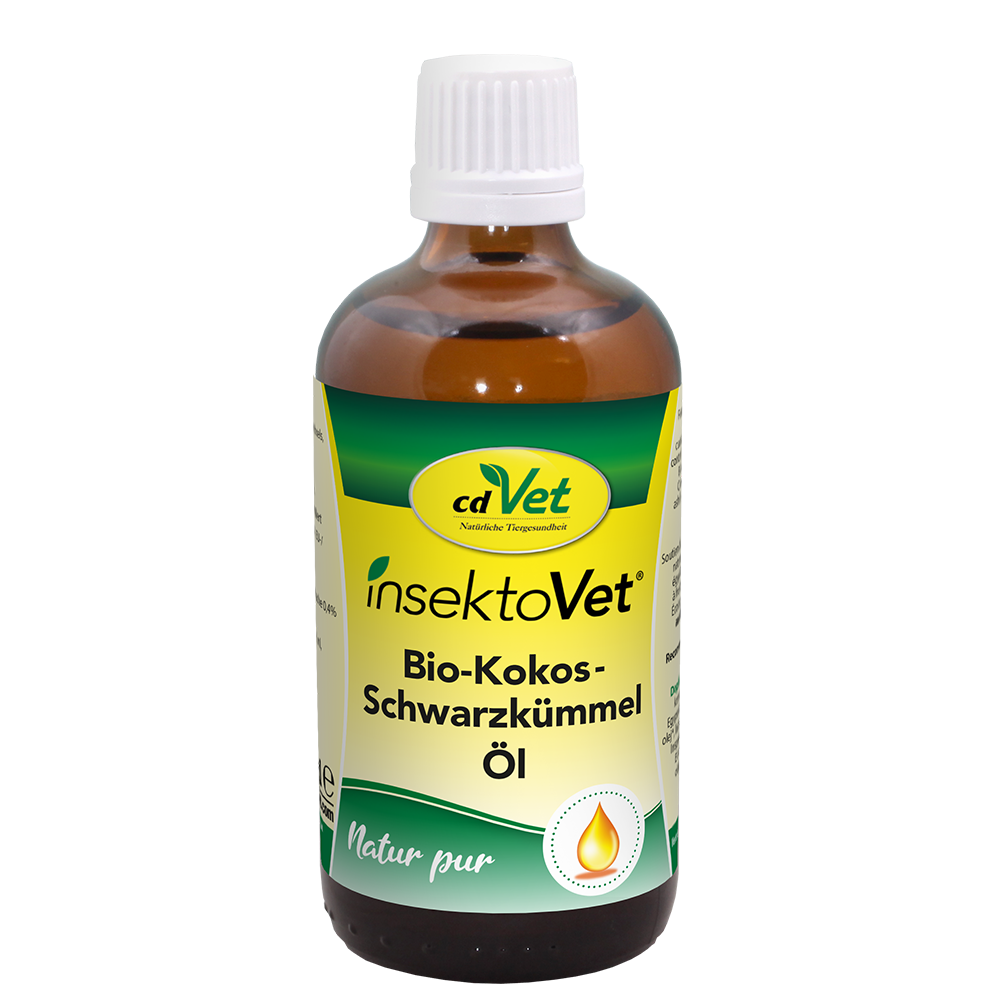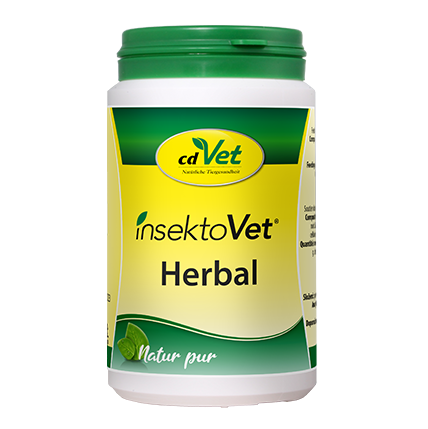The tick – a danger for humans and animals!
How can you protect yourself and your pet?
There are various ways to protect people and animals from tick bites and the associated possible infection risks:

1. If possible, avoid dense forests and tall grass, as ticks are common in these environments.

2. Protective clothing: wearing long-sleeved clothing and long pants can help protect the skin from ticks.
3. Protection from the outside by using tick repellents: the cdVet ZeckEx Spray is a highly effective tick repellent spray with immediate effect.
4. The essential fatty acids contained in it in combination with lauric acid and essential oils from black cumin can optimize the skin's metabolism and influence the animal's body odor.
Our ZeckEx SpotOn is a care oil for masking odors against ticks, fleas, mites, lice and flying insects.
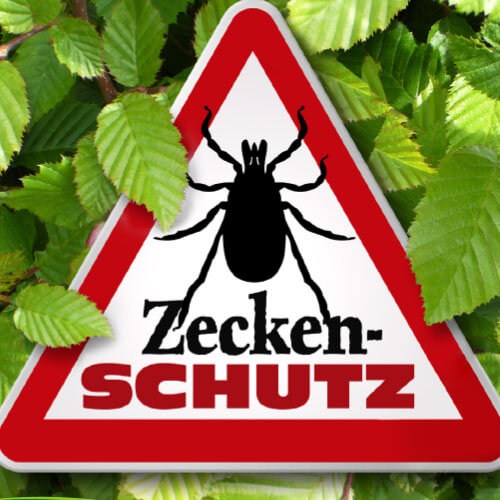
In conclusion, there is no 100% method to avoid a tick bite. A thorough examination of the body and prompt removal of ticks are important to minimize the risk of disease.
Schützen Sie Ihr Tier mit unseren neuen Zecken-Bundles
Effektiv, Natürlich, Rundum abgesichert!
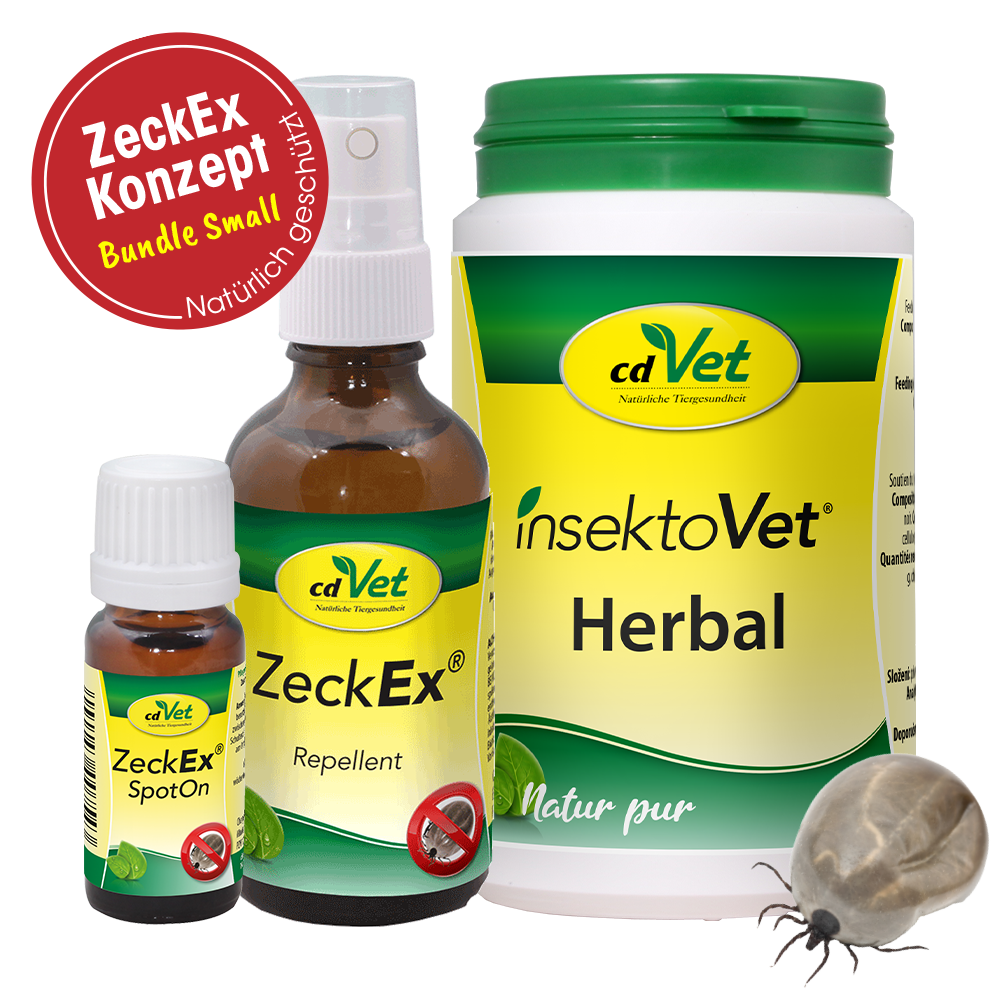
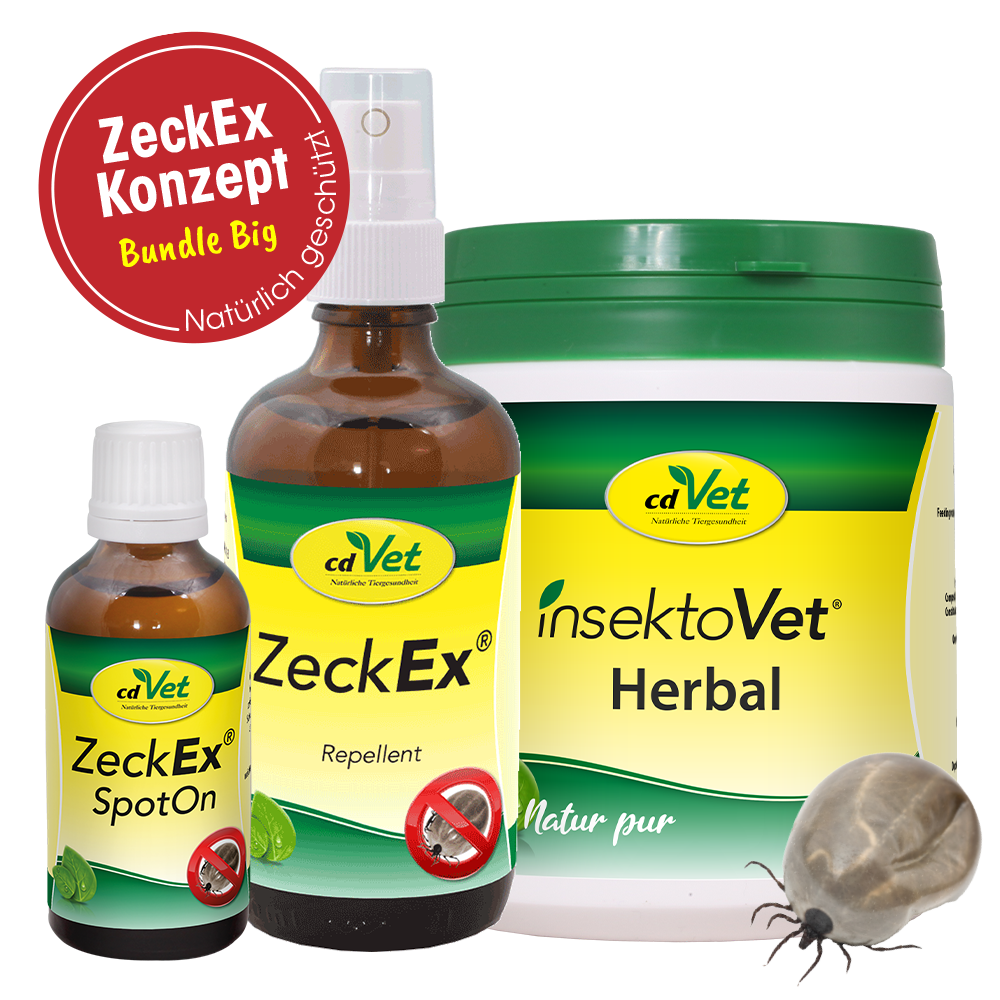
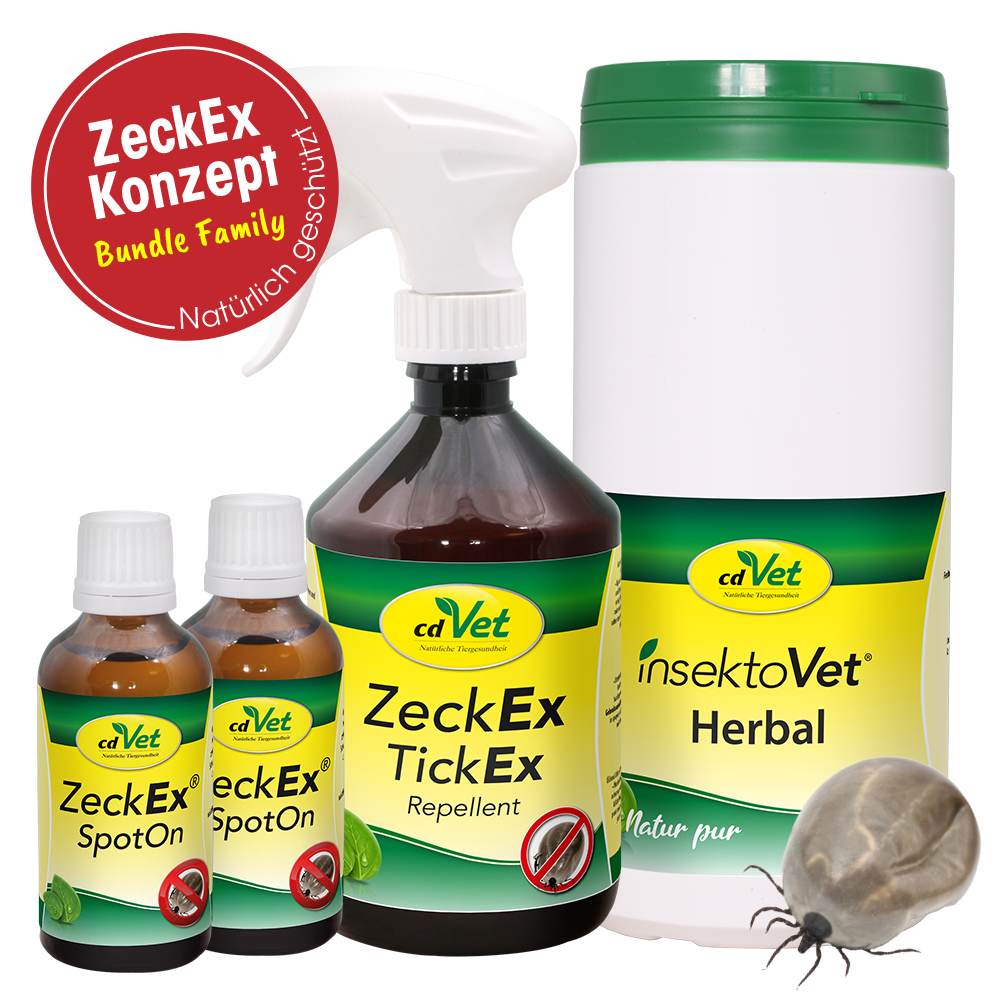
The tick is a parasite that is widespread throughout the world and is not exactly popular with our pets. The tick feeds on the blood of numerous vertebrates. Blood loss is not a problem for the host. The tick is better known as a carrier of pathogens and is therefore feared. Biologically, ticks belong to the class of arachnids, which is also easily recognizable by their eight legs. The tick's body structure means it has adapted perfectly to its environment, but as a parasite it needs other creatures whose blood it lives on. A tick can cling to its host for up to 15 days, and to do this it looks for a suitable place where it can hold on firmly. Ticks need a certain amount of blood for each growth spurt, just as females do for reproduction.
